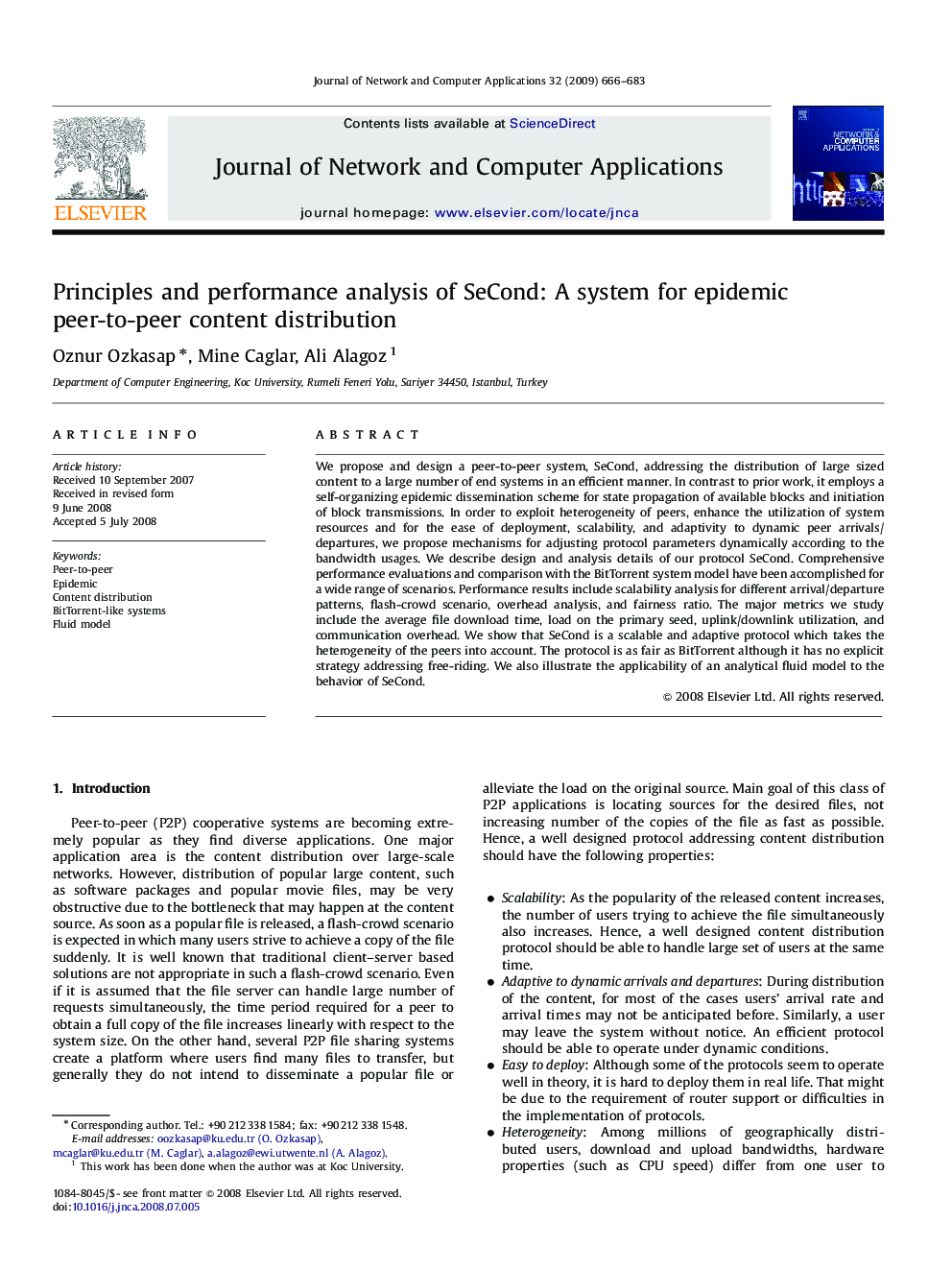| Article ID | Journal | Published Year | Pages | File Type |
|---|---|---|---|---|
| 457554 | Journal of Network and Computer Applications | 2009 | 18 Pages |
We propose and design a peer-to-peer system, SeCond, addressing the distribution of large sized content to a large number of end systems in an efficient manner. In contrast to prior work, it employs a self-organizing epidemic dissemination scheme for state propagation of available blocks and initiation of block transmissions. In order to exploit heterogeneity of peers, enhance the utilization of system resources and for the ease of deployment, scalability, and adaptivity to dynamic peer arrivals/departures, we propose mechanisms for adjusting protocol parameters dynamically according to the bandwidth usages. We describe design and analysis details of our protocol SeCond. Comprehensive performance evaluations and comparison with the BitTorrent system model have been accomplished for a wide range of scenarios. Performance results include scalability analysis for different arrival/departure patterns, flash-crowd scenario, overhead analysis, and fairness ratio. The major metrics we study include the average file download time, load on the primary seed, uplink/downlink utilization, and communication overhead. We show that SeCond is a scalable and adaptive protocol which takes the heterogeneity of the peers into account. The protocol is as fair as BitTorrent although it has no explicit strategy addressing free-riding. We also illustrate the applicability of an analytical fluid model to the behavior of SeCond.
